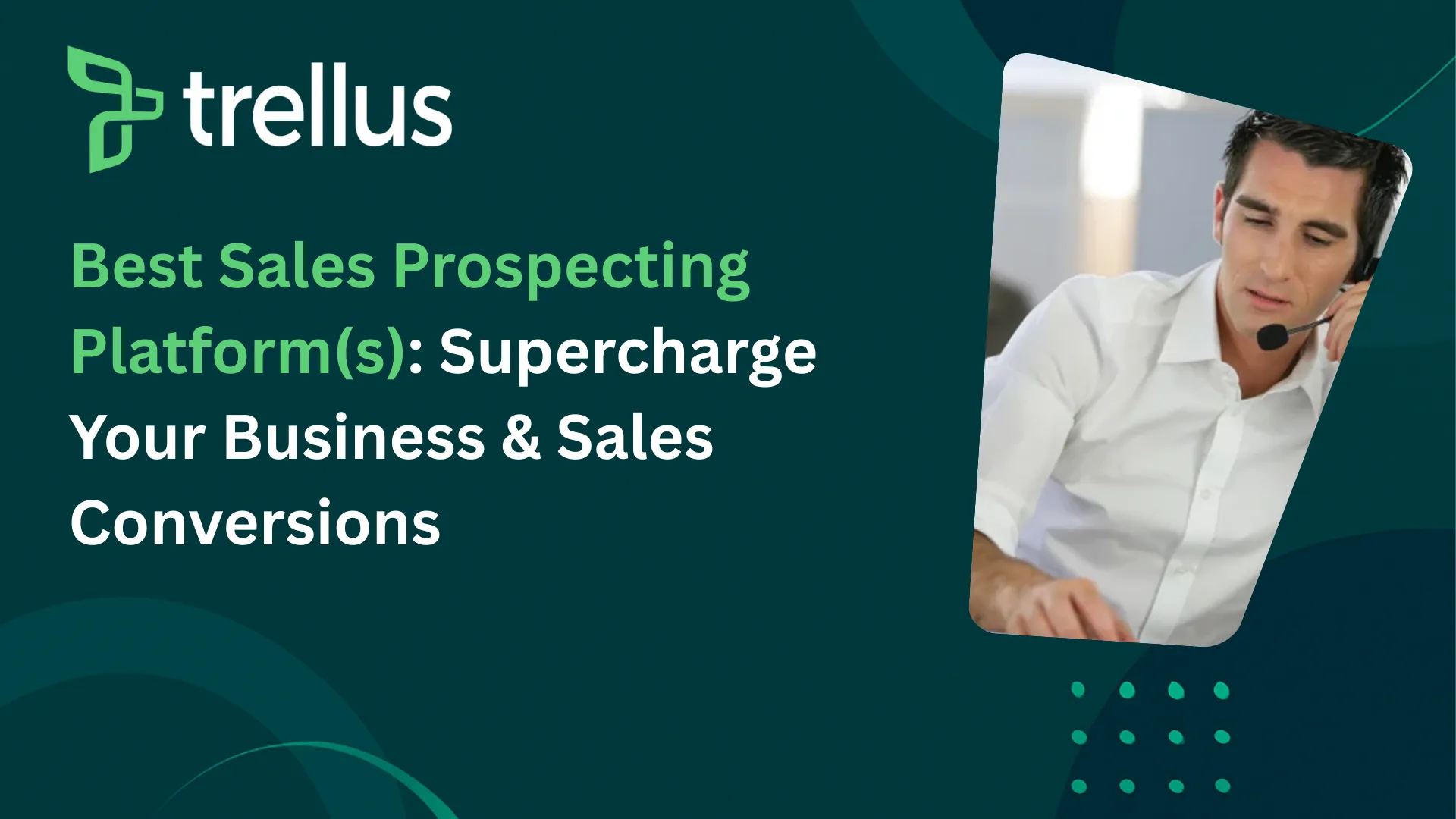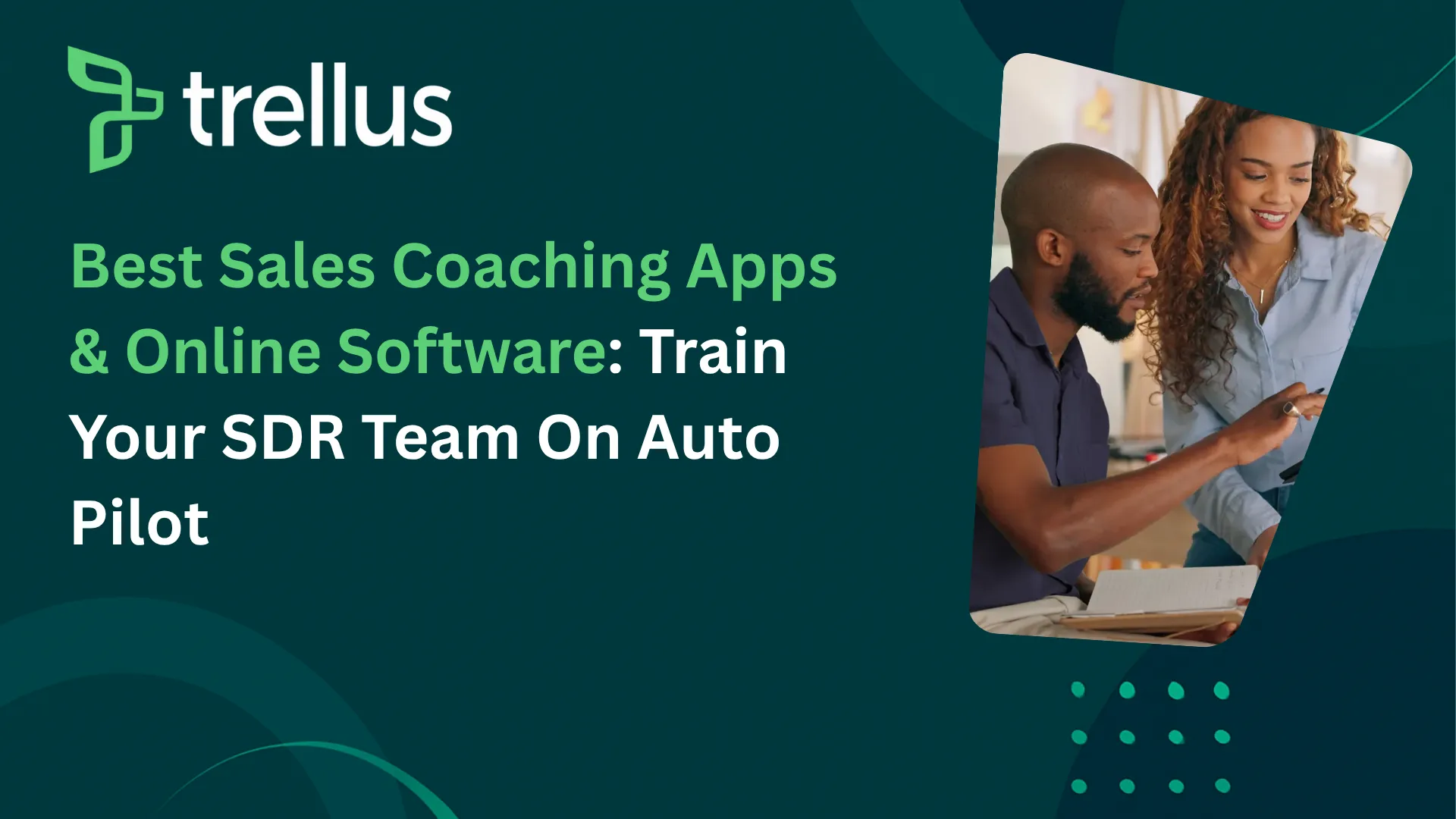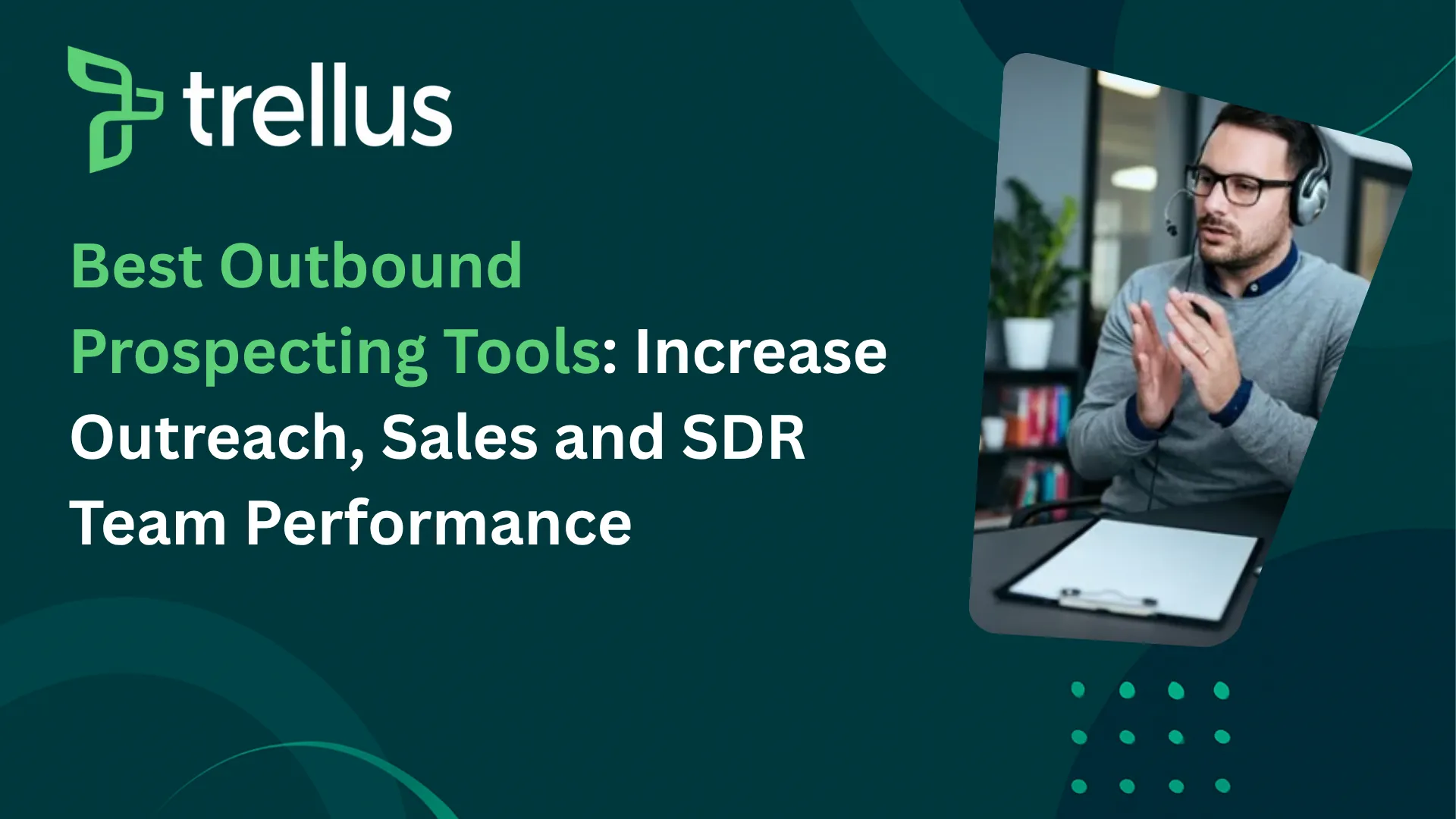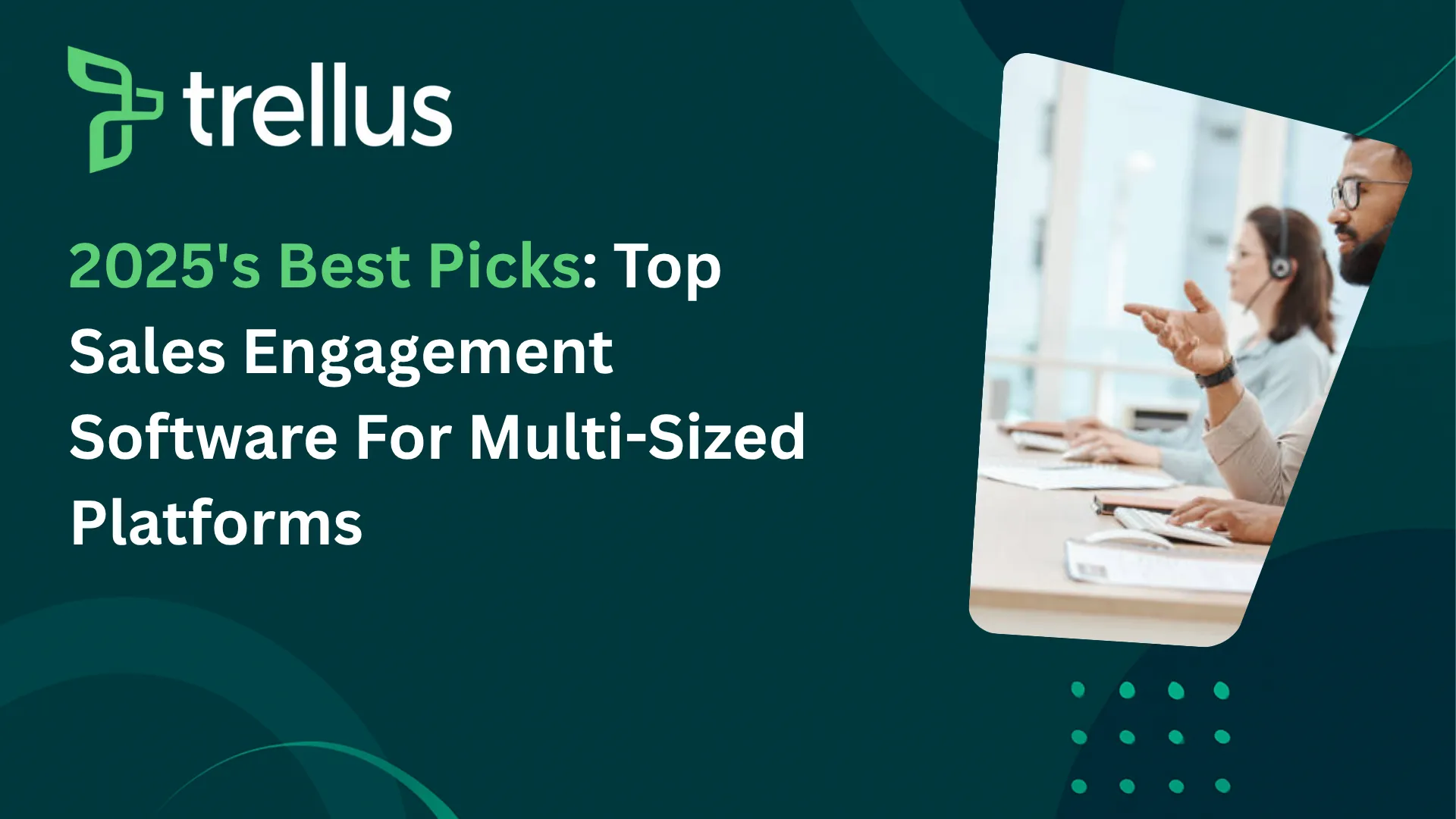
Our Top Picks


Modern B2B buyers interact with sellers across many channels, and the average buying process now involves more decision-makers and longer evaluation cycles.
Sales teams face a paradox: buyers expect highly personalized outreach, but reps are buried in manual tasks; switching apps, copying data between systems, and recreating messaging that should be repeatable. That friction directly costs pipeline and conversion.
Sales engagement software is the technology category that removes that friction.
These platforms centralize outreach (email, calls, social touches, SMS), automate repeatable sequences, enforce consistent messaging through templates and playbooks, and surface the analytics reps and managers need to prioritize activities that actually move deals. Put another way: a sales engagement platform turns a CRM’s static data into action, helping reps spend more time on high-value conversations and less on administration.
What follows is a thorough review of the top 15 sales engagement platforms for 2025, what to look for when choosing one, the best free options to try first, and practical tactics to get the highest ROI from any engagement tool.
What is Sales Engagement Software?
Sales engagement software (SEP) is the layer that sits on top of your CRM and communication channels to orchestrate how sellers reach out, follow up, and measure outcomes.
Where a CRM stores relationships and deal stages, a SEP coordinates the sequence of touches — email cadences, call tasks, LinkedIn steps, and automated follow-ups — and records the engagement signals (opens, clicks, replies, call outcomes).
The platform typically includes templates, sequencing builders, dialing and SMS integrations, deliverability tools, contact data enrichment, and analytics dashboards focused on activity-to-outcome performance.
What are the core benefits of using sales engagement platform software?
Boosts sales productivity. Automation of repetitive tasks — scheduling follow-ups, logging activity, creating call lists — frees reps to spend more time in real conversations. That incremental selling time scales across teams.
Ensures consistent messaging. Templates, snippets, and playbooks enforce a uniform voice and repeatable processes across SDRs and AEs, increasing predictability and enabling coaching at scale.
Improves buyer experience. Sequenced, multi-channel outreach that’s personalized (first-name personalization, company details, short contextual lines) reduces spammy feelings and raises reply rates.
Provides actionable insights. Engagement analytics show which subject lines, sequences, or call cadences actually produce replies and conversions, enabling data-driven iteration instead of guesswork.
Key Features to Look for in the Best Sales Engagement Software
When evaluating vendors, look beyond marketing copy and check how each capability works at scale and inside your stack. Below are essential features and why they matter.
- Multi-channel outreach tools
The ability to orchestrate email, calls (and call recording), SMS, and social touches from one workspace reduces context switching. Teams operating across channels can schedule and automate mixed sequences that follow the buyer’s preferred medium. - Sales cadence software & sequencing
A visual cadence builder with conditional steps (e.g., "if replied, stop sequence; if opened but not replied, send second email in 3 days") is critical. True cadence tooling makes it easy to test different touchpoint patterns. - Automation & AI
AI features such as best-time-to-send, subject-line suggestions, reply summarization, and lead scoring speed up personalization and prioritization. AI should assist — not replace — seller judgment. - Analytics and reporting
Dashboards that map activities to outcomes (reply rate, booked meetings, pipeline created) enable managers to identify top-performing sequences and coach weaker performers. - CRM integration
Deep, bidirectional sync with CRMs like Salesforce or HubSpot ensures that activities update records in real time and that cadences respect contact/owner rules. - Deliverability tools
For email-focused programs, domain warm-up, reputation monitoring, and bounce handling preserve sender health and long-term deliverability. - Task & workflow management
A unified task list, prioritized work queues, and mobile access help reps stay organized when handling many accounts and follow-ups.
Each feature should be evaluated not only for presence but for maturity — e.g., how robust are an AI assistant’s edit controls, can the cadence builder scale to account-based plays, and how transparent are analytics calculations?
The Top 15 Best Sales Engagement Software of 2025
The following list ranks platforms based on breadth of features, AI and automation maturity, integration depth, target customer fit (SMB vs Enterprise), deliverability capabilities, and pricing transparency. Short reviews follow for each tool, with a consistent format: overview, key features, ideal users, and pricing cues.
1. Trellus.ai
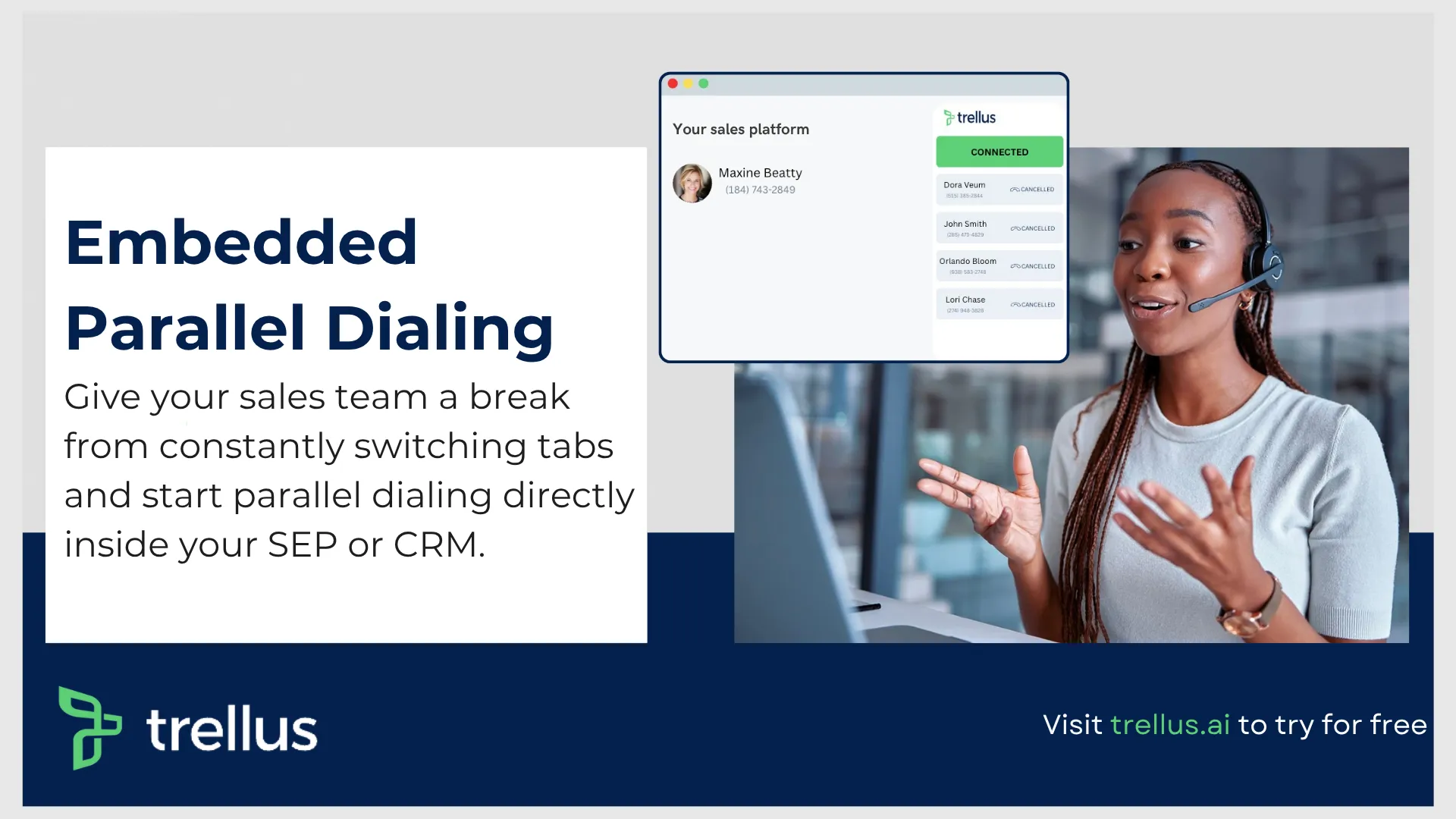
Trellus.ai is positioned as a modern, AI-first sales engagement option focused on revenue orchestration and creative automation for SDR teams.
Key Features
- AI-assisted cold calling with live coaching system
- Multi-channel through LinkedIn Superhuman, automated workflow, integration support for multiple CRMs, etc.
- Embedded parallel dialer for increased outreach, sales conversions and resource management
Who is it for? Growth-stage startups, multi sized outbound sales calling businesses, and general platforms that need an ai powered solution.
Pricing: Typically available by quote or demo; trial options vary.
2. Salesloft — The Complete Revenue Orchestration Platform
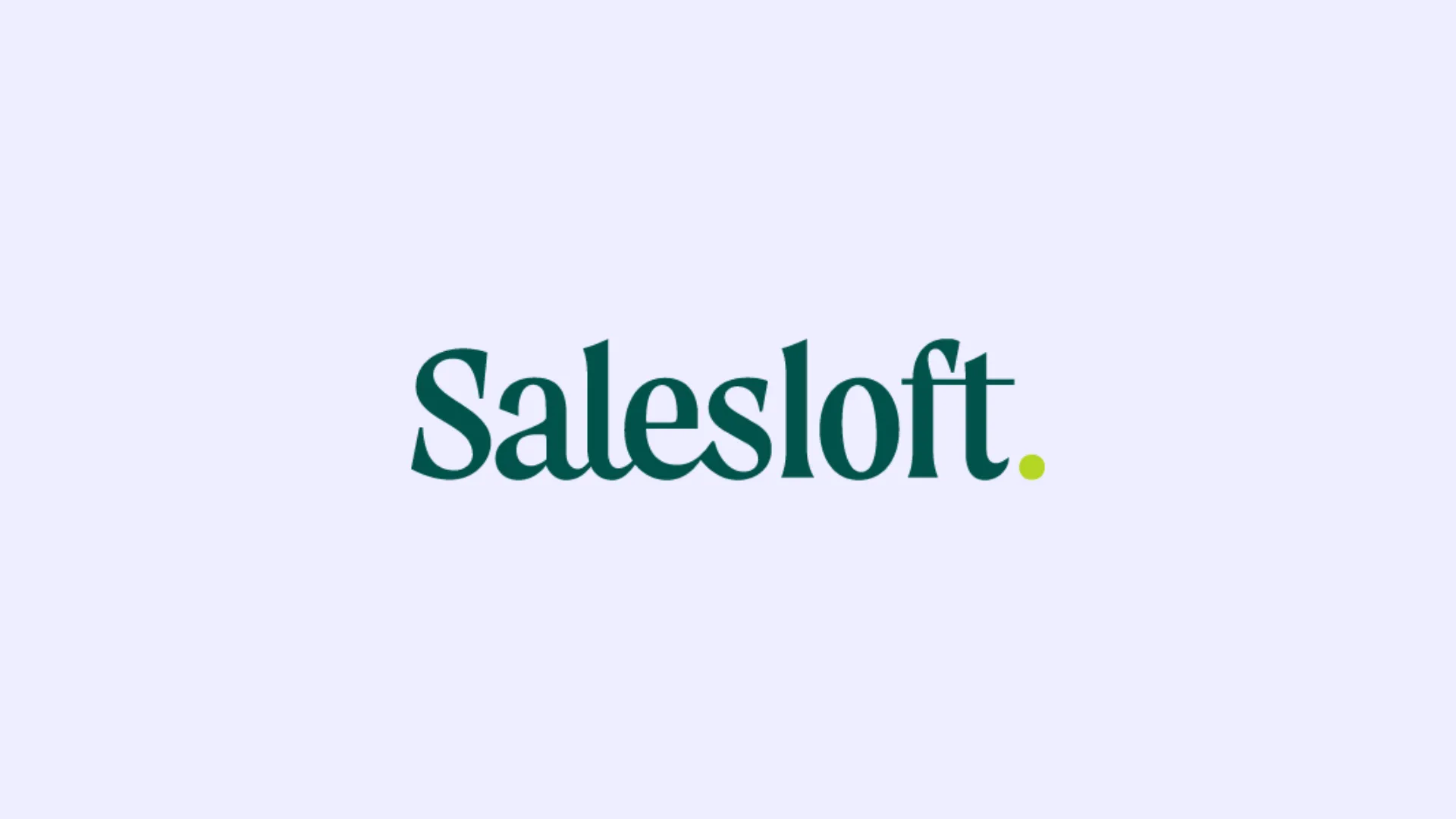
Salesloft promotes itself as a revenue orchestration platform that uses purpose-built AI to prioritize and guide activities across the revenue team.
Key Features
- Revenue orchestration and AI agents that prioritize tasks
- Robust cadence builder and dialer with call recording
- Deep Salesforce and marketing automation integrations
Who is it for? Enterprise and large mid-market revenue teams seeking a full-featured orchestration layer.
Pricing: Enterprise-focused; demos and quotes are standard. Salesloft publishes case studies showing significant ROI for customers.
3. Outreach — The AI-Powered Revenue Workflow Leader

Outreach has evolved into an “AI Revenue Workflow Platform,” emphasizing AI-driven productivity and agentic workflows that automate research and next-best-actions for sellers.
Key Features
- Generative AI for research, email drafts, and playbook recommendations
- Workflow automation across sales and RevOps functions
- Extensive integrations and marketplace
Who is it for? Large enterprises and revenue operations teams that need advanced workflow automation and AI capabilities.
Pricing: Enterprise-tier with demo required; Outreach markets major product releases and AI features publicly.
4. HubSpot Sales Hub — The All-in-One CRM & Engagement Choice

HubSpot provides a free CRM coupled with paid Sales Hub tiers that add advanced engagement, automation, and reporting. The free CRM remains a strong entry point for small teams.
Key Features
- Free CRM with contact, pipeline, and basic engagement features
- Sequences, meeting scheduling, and document tracking in paid tiers
- Native inbound marketing and customer-service integrations
Who is it for? Inbound-focused SMBs and teams that want an all-in-one stack with low friction to get started.
Pricing: HubSpot CRM is free; Sales Hub adds tiers with increasing automation and team features.
5. Salesforce Sales Cloud
Salesforce’s sales engagement capability (formerly High Velocity Sales) is integrated into Sales Cloud to provide cadence management, Einstein AI scoring, and deep platform extensibility. The product is often marketed as “Sales Engagement” within Salesforce.
Key Features
- Native cadences and work queues inside Salesforce
- Einstein Lead/Opportunity scoring and automation
- Tight connectivity to the broader Salesforce ecosystem (Service Cloud, Marketing Cloud)
Who is it for? Large enterprises already invested in Salesforce that want an embedded engagement layer.
Pricing: Typically licensed as a Sales Cloud add-on; consult Salesforce for edition and licensing details.
6. Apollo.io — The Best for Integrated Data and Engagement
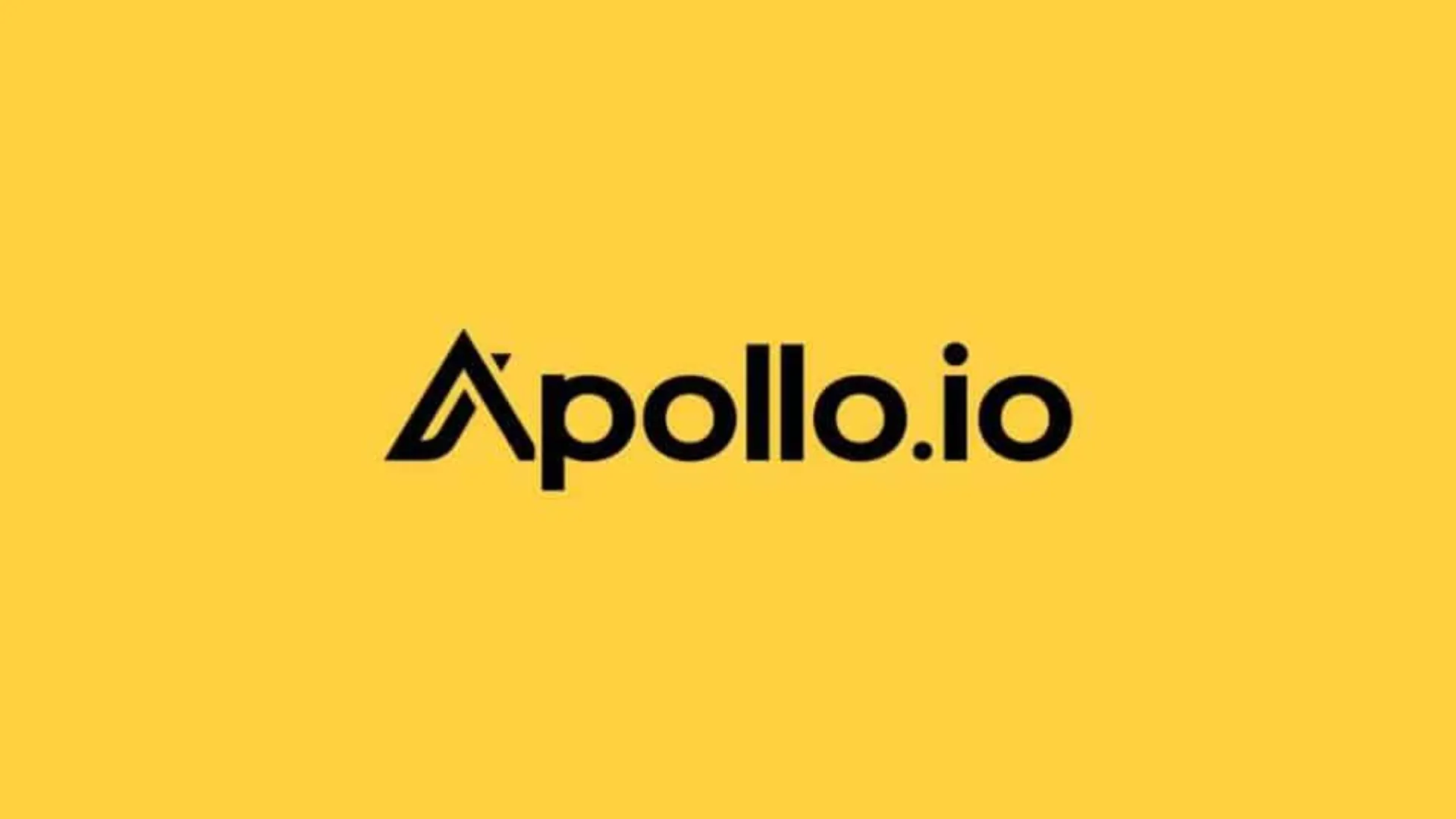
Apollo combines a large prospect database with engagement features for outbound teams; it’s known for its extensive contact coverage (commonly cited as over 275M contacts).
Key Features
- Massive contact and company database with enrichment
- Built-in email sequences, automation, and reporting
- Prospecting lists and intent signals
Who is it for? SDR teams and SMBs that need an integrated data + engagement solution.
Pricing: Free tier available with paid plans scaling by seats and data access.
7. Reply.io — The Best for AI-Powered SDR Automation
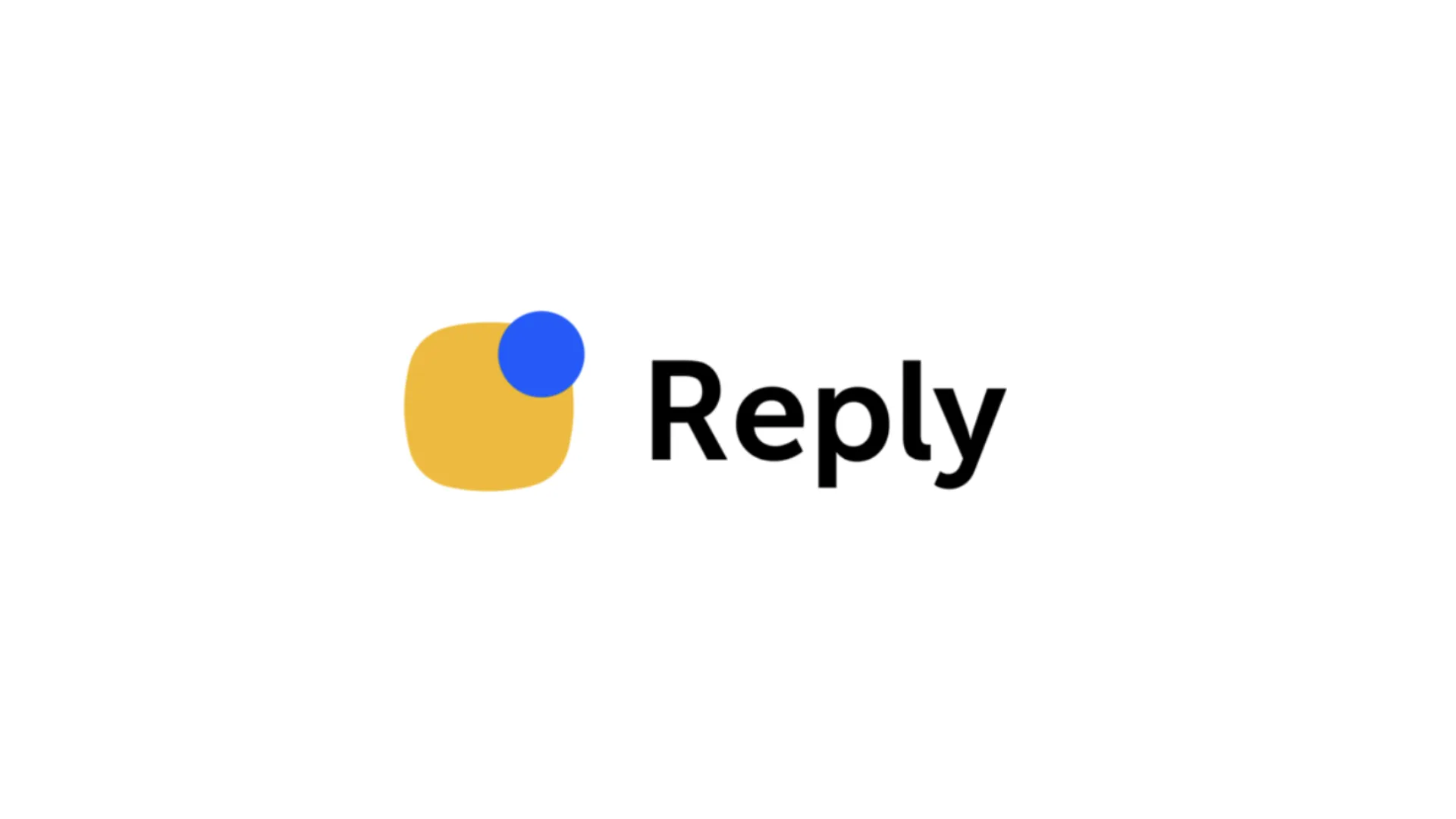
Reply focuses on automating outreach across email, calls, and LinkedIn with AI features for personalization and reply detection.
Key Features
- Multi-channel sequences, including LinkedIn automation
- AI content suggestions and reply parsing
- Team performance dashboards
Who is it for? SDR teams that want flexible automation and multi-channel reach.
Pricing: Subscription tiers per seat; free trials commonly offered.
8. Lemlist — The Best for Creative & Personalized Outreach

Lemlist stands out for its emphasis on personalized, image- and video-enabled email campaigns that help teams stand out in the inbox.
Key Features
- Personalization tokens for images and dynamic content
- Deliverability tools and inbox warm-up features
- Campaign A/B testing and analytics
Who is it for? Teams that rely heavily on creative, highly personalized email outreach.
Pricing: Tiered plans per seat with agency options.
9. Instantly.ai — The Best for High-Volume Cold Email

Instantly focuses on high-volume cold email with deliverability tooling to maximize reach while maintaining inbox health.
Key Features
- Automated warm-up and rotation features for domain health
- Scalable sending with bounce management
- Campaign scheduling and reply handling
Who is it for? Agencies and high-volume outbound teams prioritizing scale and deliverability.
Pricing: Volume-based plans and per-domain options.
10. Klenty — The Best for Deep CRM Integration
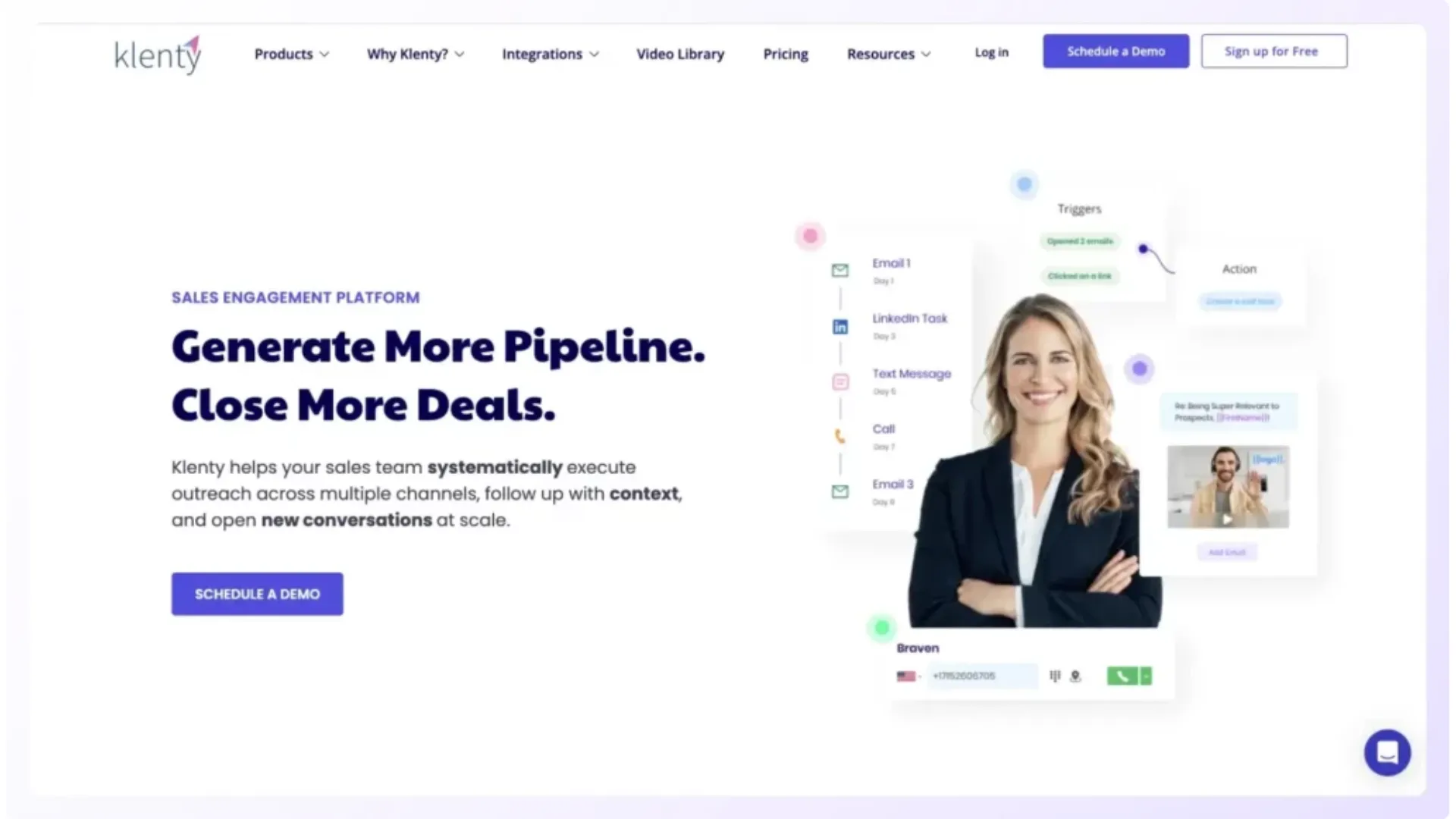
Klenty emphasizes tight synchronization with CRMs, especially Salesforce and HubSpot, so sales activity flows cleanly into records and workflows.
Key Features
- Two-way CRM sync with precise field mapping
- Cadence automation and task queues
- Email tracking and templates
Who is it for? Teams that require strong CRM fidelity and automation without sacrificing reply tracking.
Pricing: Seat-based plans and enterprise licensing available.
11. Woodpecker — The Best for Deliverability-Focused Outreach

Woodpecker is optimized for SMB outreach with strong anti-spam features and deliverability controls.
Key Features
- Inbox-safe sending, domain warm-up, and bounce handling
- Personalized sequences and follow-ups
- Integration with CRMs and Zapier
Who is it for? Small teams focused on cold email deliverability and simple automation.
Pricing: Affordable per-seat plans with trial periods.
12. Zendesk Sell — The Best for Sales & Support Alignment

Zendesk Sell integrates sales engagement with Zendesk’s customer support stack, enabling smoother handoffs from pre-sale to post-sale service.
Key Features
- Integrated ticketing and contact timelines
- Sales automation, sequences, and activity tracking
- Mobile-first interface for field teams
Who is it for? Teams that need close alignment between sales and support workflows.
Pricing: Tiered subscriptions with bundled Zendesk options.
13. Freshsales (Freshworks CRM) — The Best for AI-Assisted SMBs

Freshsales (Freshworks CRM) bundles AI-assisted lead scoring and engagement tools within a simple interface geared to SMBs.
Key Features
- Freddy AI for lead scoring and email insights
- Built-in phone, email, and activity logging
- Affordable tiers with useful automation
Who is it for? Small to medium businesses that want AI help without complex setup.
Pricing: Free and paid plans with graduated features.
14. Saleshandy — The Best Budget-Friendly Option

Saleshandy is a cost-effective platform for email sequencing, document tracking, and mail merge needs.
Key Features
- Email tracking and templates with mail merge
- Sequence automation and follow-ups
- Basic analytics for campaigns
Who is it for? Budget-conscious teams and solo SDRs who need core sequencing plus tracking.
Pricing: Low-cost tiers per user, with free trials.
15. Mailshake — The Best for Simple, Effective Email Outreach
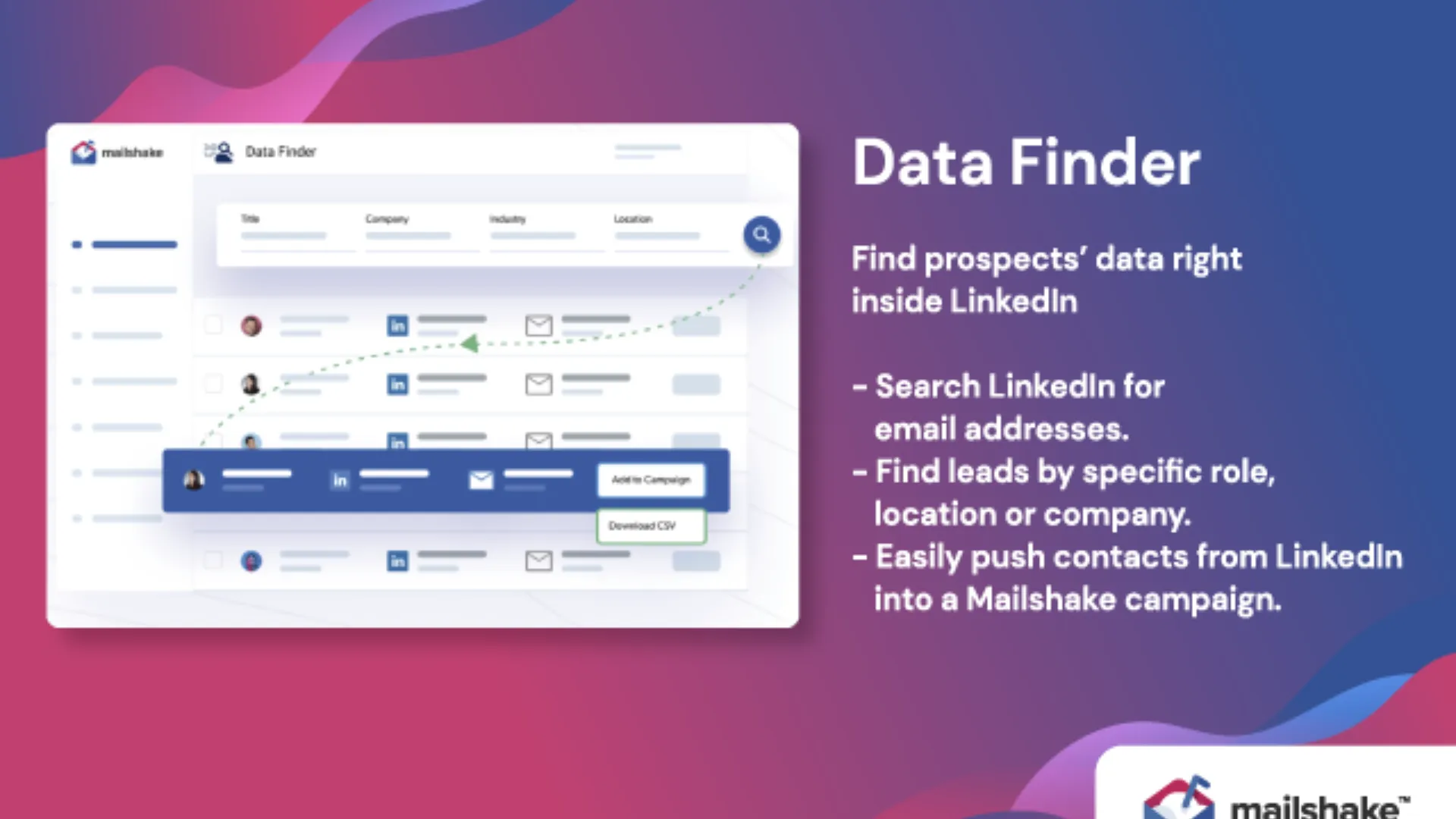
Mailshake focuses on straightforward email outreach combined with phone and social steps, and an emphasis on usability and templates.
Key Features
- Easy-to-build sequences and templates
- Integrated calling and social tasks
- Analytics that focus on meetings booked and replies
Who is it for? Small sales teams and agencies that value simplicity and rapid onboarding.
Pricing: Seat-based pricing with trial options.
How to Develop Effective Sales Engagement Strategies with B2B Software
Tools are powerful but only when matched with an intentional strategy. The following steps translate platform features into repeatable outcomes.
Define your Ideal Customer Profile (ICP) and target lists. Use sales intelligence and firmographic filters to focus outreach on contacts most likely to convert. Precision reduces wasted touches and improves reply rates.
Build multi-channel cadences. A modern cadence mixes email with calls, LinkedIn touches, and at times SMS or video. Schedule non-email steps to follow email opens or no-reply windows, and use conditional logic to stop cadences after a reply.
Personalize at scale. Templates plus dynamic tokens and short custom lines (one or two sentences referencing a relevant trigger) achieve personalization without manually writing each message. Use AI suggestions as drafts, and always edit them for accuracy and tone.
A/B test messaging and cadence timing. Run controlled experiments on subject lines, first lines, CTA phrasing, and gap lengths between touches. Track statistically significant lifts before scaling winners.
Monitor deliverability and sender health. Warm new sending domains, monitor bounce/backscatter, and rotate sending domains if volume and use cases require it. Sender reputation is a long-term asset.
Use analytics to iterate. Align KPI tracking to revenue outcomes (meetings booked → pipeline → closed-won) not just opens. Review which sequences create pipeline and decommission low-performing plays.
Enable systematic coaching. Use recorded calls, reply examples, and sequence analytics to provide targeted coaching. Rep-level dashboards help managers identify where coaching will produce the largest lift.
Frequently Asked Questions
What is the main purpose of a sales engagement platform?
To make sales teams more efficient by centralizing and automating prospecting and follow-up activities across channels, and by surfacing analytics that guide better seller behavior.
Can sales engagement software integrate with my existing CRM?
Yes.
Leading vendors offer deep, bidirectional integrations with major CRMs like Salesforce and HubSpot so that contacts, tasks, and engagement data remain synchronized. Integration fidelity — how quickly and accurately data flows and whether custom fields map correctly — is important to validate in a proof of concept.
How much does sales engagement software typically cost?
Pricing varies widely: from free CRM tiers to per-seat SaaS subscriptions, to enterprise quotes for revenue orchestration suites. Expect small-team plans from roughly tens to low hundreds of dollars per user per month, while enterprise bundles with advanced AI and analytics are typically quoted. Look for transparent trial options to validate ROI.
What's the difference between sales engagement and sales enablement?
Sales engagement manages the interactions and cadence of outreach; sales enablement equips reps with the content, training, playbooks, and collateral that they use during those interactions. Both are complementary — engagement executes the plays, enablement supplies the playbook.
How do I measure success after implementing a SEP?
Track leading indicators (reply rates, meeting-booked rates, outbound activity per rep) and lagging revenue metrics (pipeline created, win rate, sales cycle length). A clean baseline prior to rollout allows you to quantify lift attributable to the platform.
Conclusion: Choosing the Right Platform to Supercharge Your Sales
The right sales engagement software reduces repetitive work, delivers consistent, personalized outreach, and provides the analytics leaders need to optimize activities into revenue. Your ideal choice depends on team size, existing tech stack, required channels, deliverability needs, and whether you need deep revenue orchestration or lightweight sequencing.
Start by mapping your current workflow and constraints: CRM choice, volume of outreach, required channels, and deliverability risks. Pilot 1–2 platforms with representative sales users, measure the signal-to-noise in analytics (do the reported metrics align with actual outcomes?), and evaluate the vendor’s integration and support posture.



